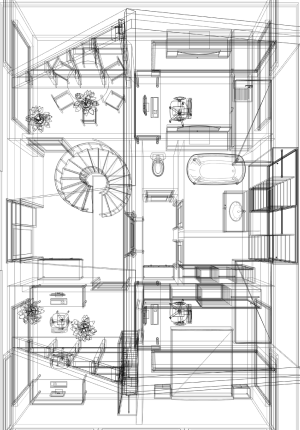Why Does My House Have Hot or Cold Spots?
Why does My House Have Hot or Cold Spots?
Imagine this: It’s summertime, you’ve got your AC on, and you’re sitting in your living room where the temperature is perfect, nice and comfortable. Let’s say it’s the afternoon, and it’s time to get ready to go out to dinner. So you head to your bedroom, and when you walk in, you can feel the temperature change. You say to yourself, “Why is it so warm in here? The rest of the house feels fine.” This is actually a pretty common problem, and the reverse could happen too. Maybe there is one room or spot in your home that always feels colder than everywhere else. So is this normal, just something we have to deal with? No, with a properly-designed HVAC system hot or cold spots shouldn’t exist, and everything should be balanced to keep a relatively even temperature. Here are some of the things that can cause these temperature differences.
Your System is Oversized
One possible cause of hot spots in the house, is having an AC system that is too big. It might seem counter-intuitive, that bigger should be better. But when it comes to HVAC that’s simply not true. A system that is too big can actually cause more problems than it would fix. We won’t go into all the details here, but for more info on system sizing, check out our video Biggest HVAC Scam!! Don’t get manipulated!.
One way an oversized system causes hot spots is because it ends up not running for long enough. An AC system removes heat from the air, but it also removes humidity, as the air crosses over the evaporator coil. The bigger a system is, the faster it’s able to satisfy the thermostat setting, and once the thermostat is satisfied the system turns off. But if the thermostat setting is hit too fast, the system turns off before it really has time to lower the humidity, or remove the heat from air that’s further away from the main return and thermostat. So what happens in those rooms that are farther away? Those are your hot spots. So it’s always best to have a load calculation done for your home to calculate what the actual heat load is, so that you can be sure you have the right size system for the load. At ProCalcs, this is what we specialize in.
Not Enough Returns
Returns are the grilles in the ceiling or wall, and sometimes floor, where air is drawn in to the duct system and taken back to the air handler or coil. A lot of homes will have one or two main return grilles, somewhere out in the common area, like the living room or a hallway. For some homes, that is the only return there is, just one way for the air to get back to the air handler. They may have transfer grilles over the bedroom doors, or a short jumper duct from the bedroom to the hallway. But no return grilles in the bedrooms or other rooms that are connected to the duct system. So for any room that’s far away from that main return grille in the common area, the air from that room has to travel a lot farther to get into the main return, to get to the air handler to be cooled down. Even though cool air is being supplied to that room, its still just mixing with the warm air, so the temperature still ends up being higher.
However, if each bedroom or study is designed with a direct return (one that is connected to the duct system and leads back to the air handler), the air in that room is able to be recirculated faster. Instead of having to be pushed all the way to the main return in the living room, the air from each bedroom is drawn into the return grille in that room, sent through the air handler or coil, heat removed, humidity lowered, and then sent back out into the supply ducts back to the room. When these ducts and grilles are properly sized, and the correct amount of air is being supplied to a room and taken out of a room, that is what leads to keeping a balanced temperature.
These are the two biggest causes of hot or cold spots in a home. You want to have the right size AC system, and a properly-designed duct system with plenty of returns. If you’d like to see some visuals of hot and cold spot issues, watch this video Hot & Cold Spots in Your Home – How to Stop it! If you have any questions or want to talk about possible solutions for your home, send us an email at [email protected].


